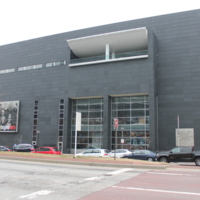
Reginald F. Lewis Museum of Maryland African American History and Culture
The Reginald F. Lewis Museum of Maryland African American History and Culture was created out of the passion and activism of businessman Reginald F. Lewis. Lewis rose from humble beginnings to earn a place at Harvard Law School, establish the first African American law firm on Wall Street and become the wealthiest African American in the US. In 1993, he died suddenly after a short illness. During his illness, he made known his desire to create a museum of African American culture and after his death, the non-profit foundation started in his memory accomplished that.
The museum is located in downtown Baltimore close to one of the several locations of former slave pens. The collection 'explores the African American experience and tells the universal story of the struggle for liberty, equality and self-determination.' The main collection is housed on the third floor and is divided into three sections: Building Maryland, Building America; The Strength of the Mind; Things Hold Lines Connect. Building Maryland, Building America has a heavy focus on slavery, explaining the roles of the enslaved in urban and rural environments. Unlike the cotton plantations of the Deep South, Maryland slavery ranged widely: tobacco plantations, shipyards, oyster shucking and iron furnaces to name a few.
Throughout the exhibitions, the interpretive text is supplemented with interactive displays, video and audio presentations and artwork. The overreaching message of the museum is that African Americans have contributed to the US since their initial forced arrival and have worked tirelessly to better their plight; through emancipation, the right to vote, the Civil Rights Movement and into the more recent social movements. The museum does not shy away from presenting the brutal side of slavery and Jim Crow, with slave collars, shackles, reward notices and video in connection to lynching are sensitively displayed.
The ground floor of the museum hosts temporary exhibitions and there is dedicated education space for the many school trips they host during the year. The museum also provides learning resources to assist with the local curriculum, offering lesson plans and outreach sessions in local schools. Throughout the year, the museum hosts a diverse range of events. The museum is open Wednesday through Sunday with a small admission fee.
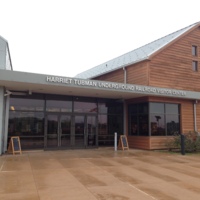
Harriet Tubman Underground Railroad National Historical Park
The Harriet Tubman Underground Railroad National Historical Park was established in 2003, the 100th anniversary of Tubman's death, in rural Dorchester County. In 2017 the Harriet Tubman Underground Railroad Visitor Centre was officially opened. The visitor centre was a collaborative project between the US National Park Service and the Maryland Park Service. The building houses exhibition space, a research library and gift shop. Also on location is a public pavilion and legacy garden.
The design of the site was built around the importance of northward movement in the slave's quest for freedom. The legacy garden stretches out north between the buildings, offering an expansive and hopeful view. The view south is more enclosed and fragmented, reflecting the intolerable existence for those enslaved. The visitor centre houses an exhibition that chronicles the life and accomplishments of Tubman; her birth into slavery, escaping and subsequently returning to free friends and family, her work as a Union spy and her activism after the Civil War. The story is told through a combination of interpretive text, videos, murals, dioramas and her own powerful words.
The park and visitor centre are open seven days a week and are free to the public. The visitor centre also provides further information on the Harriet Tubman Underground Railroad Byway Driving Tour, which has 36 stops throughout the Eastern Shore of Maryland linked to Tubman's life.
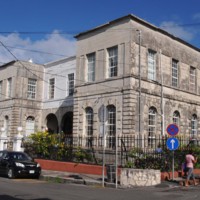
Museum of Antigua and Barbuda
Housed in the former courthouse of Antigua's capital, St John's, the Museum of Antigua and Barbuda opened in 1985. Managed by the Historical and Archaeological Society, it interprets the history of Antigua from the island's geological birth until its political independence in 1967. Collecting is central to the museum's ethos and it has developed a large collection of items relating to its local history through acquisitions and donations. It also has a digital records library with over 25,000 records available to browse.
The exhibits themselves trace the history of Antigua chronologically. The first gallery maps the geological development of the island using natural history specimen and artist interpretations alongside text panels. There are also displays that showcase the traditional crafts of the island, including basket weaving.
The second gallery then explores the arrival of the Europeans to the island and the development of the plantation economy fueled by the transatlantic slave trade. Here the displays examine what life was like on the plantations, using objects that highlight the brutal nature of enslavement, as well as archaeological samples that provide an insight into the everyday life of the enslaved. Some text panels provide information about instances of resistance, alongside images of supporting archival sources.
The final gallery explores how the island developed following the abolition and then the emancipation of the slave trade, two world wars and political independence. Here, objects are complemented with oral testimonies from local people.
The museum also has a gallery for temporary exhibitions focussing on different aspects of Antigua and Barbuda's local history. It also runs a programme of community events, and a series of education sessions for schools.
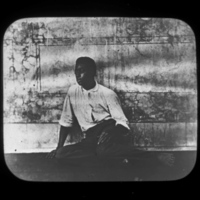
Enslaved African
An image of an enslaved African seated on the ground. This image (Neg. 27) formed part of the Harris Lantern Slide Collection. This photograph formed part of the Harris Lantern Slide Collection. Under King Leopold II the Congo Free State used mass forced labour to extract rubber from the jungle for the European market. As consumer demand grew King Leopold II's private army - the Force Publique - used violent means to coerce the population into meeting quotas, including murder, mutilation, rape, village burning, starvation and hostage taking. Alice Seeley Harris and her husband Reverend John H. Harris were missionaries in the Congo Free State from the late 1890s. Alice produced a collection of images documenting the horrific abuses of the African rubber labourers. Her photographs are considered to be an important development in the history of humanitarian campaigning. The images were used in a number of publications. The Harrises also used the photographs to develop the Congo Atrocity Lantern Lecture which toured Britain and the the USA raising awareness of the issue of colonial abuses under King Leopold II's regime. Source: Antislavery International and Panos Pictures.
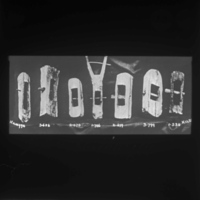
Wooden Shackles
Wooden shackles used on the coast of West Africa for securing coffles of enslaved people. This image formed part of the Harris Lantern Slide Collection. Under King Leopold II the Congo Free State used mass forced labour to extract rubber from the jungle for the European market. As consumer demand grew King Leopold II's private army - the Force Publique - used violent means to coerce the population into meeting quotas, including murder, mutilation, rape, village burning, starvation and hostage taking. Alice Seeley Harris and her husband Reverend John H. Harris were missionaries in the Congo Free State from the late 1890s. Alice produced a collection of images documenting the horrific abuses of the African rubber labourers. Her photographs are considered to be an important development in the history of humanitarian campaigning. The images were used in a number of publications. The Harrises also used the photographs to develop the Congo Atrocity Lantern Lecture which toured Britain and the the USA raising awareness of the issue of colonial abuses under King Leopold II's regime. Source: Antislavery International.
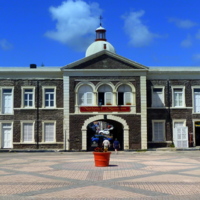
The National Museum of St Kitts
The National Museum of St Kitts is housed in the Old Treasury Building, built by the British colonial administration in 1894 and known as the 'gateway to Basseterre' due to its imposing size. The museum opened in 2002 and charts the history of St Kitts from its earliest, indigenous populations to its independence from colonial rule in 1983.
The museum has three permanent galleries which cover St Kitts' history in a chronological timeline making use of a small collection of artefacts, alongside images and text panels. The first gallery examines the indigenous populations of the island, alongside exhibits relating to natural history and ecology.
The second gallery explores the arrival of Europeans to the island and the development of slavery and the plantation economy. There are artefacts showcasing the brutal nature of enslavement, including an iron slave collar. It also explains the processes involved in the cultivation of sugar, as used on the plantations during the eighteenth and nineteenth centuries. It also provides a narrative of abolition and emancipation.
The final gallery examines the colonial governance of St Kitts post emancipation, through to independence from British rule in 1983.
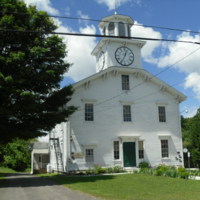
National Abolition Hall of Fame and Museum
The National Abolition Hall of Fame and Museum occupies the upper floor of the former Presbyterian Church of Smithfield, built in 1820. In 1835 it was the site of the first complete meeting of the New York State Anti-Slavery Society, and it opened as a museum to represent the history of the abolition movement in 2004. The lower floor houses the Smithfield Community Centre. In 1994, the building was added to the New York State and National Registers of Historic Places. In 2004, it was designated as a site on the New York State Underground Railroad Heritage Trail.
The Hall of Fame and Museum honours abolitionists and their achievements, periodically inducting new members. It also aims to educate about the legacy of the movement and to inspire its visitors to engage in the 'new struggle' to end racism. The museum features an introductory film that provides background context to the abolition movement, regarding the transatlantic slave trade. Written text panels, archival materials and art are used to add further depth to the narrative of the American abolition movement.
The museum also runs a programme of visitor events, and education activities.
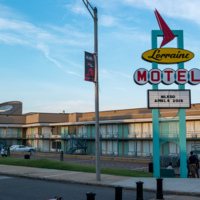
National Civil Rights Museum
The National Civil Rights Museum is housed in the Lorraine Motel, where civil rights leader Dr. Martin Luther King Jr. was assassinated on 4 April, 1968. It was founded in 1991 with the mission of sharing and raising awareness about the lessons and legacies from the Civil Rights Movement. The museum makes use of historic collections and a range of interactive exhibits, including film and audio, to tell these stories. Recently renovated in 2013-14, the museum is one of the top rated by the American Alliance of Museums and was a founding member of the International Coalition of Sites of Conscience.
The museum has five permanent exhibitions that include 260 artefacts, 40 film installations, oral histories and interactive media to guide visitors through five centuries of history. The exhibitions explore Civil Rights protest techniques- including sit ins, bus boycotts and freedom rides- as well as the Black Power movement and the assasination of Martin Luther King Jr. and its aftermath on the Civil Rights movement.
The first exhibition that visitors enter explores the longer 'Culture of Resistance' that was present in the United States prior to the Civil Rights movement, as seen through resistance to the system of slavery that dominated the country for centuries. Focussing on the period 1619-1869, the exhibition includes large scale interactive maps that emphasise the global impact of the transatlantic slave trade. There are films and art installations in the form of sculptures that show the terrible conditions inflicted on the enslaved people. Illuminated channels provide statistics and further information, including the number of people captured, goods cultivated and wealth created.
The museum also has facilities for temporary exhibitions, both on the site and online, and runs an immersive education programme for both children and adults.
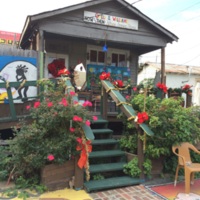
Odell S. Williams Now and Then African-American Museum
The Odell S. Williams Now and Then African-American Museum was established by Sadie Roberts-Joseph in 2001. The museum is named for Odell S. Williams, a well-loved educator in the Baton Rouge area. It was founded as Joseph identified a need in the local community for a cultural space that celebrated African American history.
The museum has a range of vibrant exhibits, showcasing the contributions of local African Americans through history, across a range of different fields. These include, music, cuisine, education, politics and business. Visitors can step onboard an authentic bus from 1953 and explore Baton Rouge's role in the civil rights movement.
The museum's display on agriculture looks at the early plantation economy of the area, and the key crops that were grown then. It also explores the experience of the enslaved Africans that who used as labour on those plantations.
It has a broad events programme, and runs the area's annual Juneteenth event.
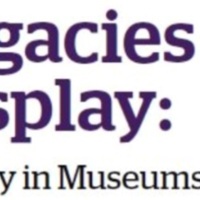
Pompey Museum of Slavery and Emancipation at Vendue House
The Pompey Museum is named after a courageous enslaved man who led a slave revolt from the Rolle Plantation on Steventon, Exuma, Bahamas. Vendue House, where the museum is located, was built in the 1790s and operated as a market place where enslaved people and other goods were sold during the nineteenth century. The house was opened as a one-room museum in 1992 and was redeveloped in 2014.
The museum is dedicated to the preservation and interpretation of the lived experience of enslaved people, particularly during transatlantic slavery, and its aftermath in The Bahamas. It features a small selection of objects and images that complement these themes. Following its redevelopment in 2014, the museum curated a powerful exhibition entitled 'Wade in The Water: Peter Mowell, the Last Slave Ship in The Bahamas' which charted the plight of the enslaved Africans on the slave ship that wrecked off Lynyard Cay in the Abacos in 1860.

Old Residency Museum
The Old Residency Museum is housed in a colonial building, designed in Scotland and shipped to Nigeria during the 1880s. It previously housed the British colonial administration in Nigeria. The museum holds the largest collection of Nigerian documents and artefacts in the world. It focusses on the history of the Calabar and Cross River Regions, as well as slavery, and is managed by the National Commission for Museums.
The first exhibition encountered by visitors on their entry to the museum explores the four centuries of the trade in people that permeated Nigeria and the region. There is a significant display of European items that were used as trade goods in exchange for enslaved Africans. This includes Venetian glass beads, pewter pots, ceramic pots, shaving sets and guns. Other displays include items that illustrate the brutal nature of enslavement, including chains and manacles.
The museum's other exhibition examines the production processes of palm oil, as one of the most important exports to Calabar, after the abolition of the slave trade.
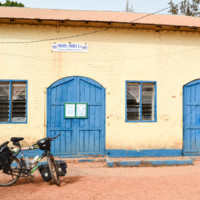
Museum of Slavery
The Museum of Slavery in the village of Albreda first opened in 1996. It is housed in the Maurel Fréres building which was built by the British colonial government in the 1840s. Only a short distance from Juffure, the home of Kunta Kinte - the main character of Alex Haley's 'Roots' - the museum is dedicated to interpreting the history of transatlantic slavery in the area. It is a hub for students and researchers.
The museum's displays use a collection of artefacts to examine the process of enslavement, with particular focus on capture and the Middle Passage. These artefacts include chain neck collars, foot cuffs, yokes and manillas. The museum also has a display about 'Roots'.
Guided tours are regularly welcomed to the museum. Visitors are also frequently taken to visit the nearby 'factory' ruins which was once used as a slave station by French and British colonial administrations.
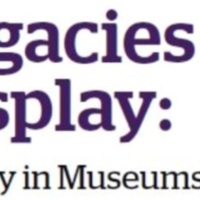
The National Great Blacks in Wax Museum
The National Great Blacks in Wax Museum opened in 1983. It was set up by Drs. Elmer and Joanne Martin as a cultural and educational institution that focusses solely on the study and preservation of African American history. It is a unique organisation as it represents the histories it interprets through the use of life size wax figures, presented in historical settings. The museum has several objectives, including to increase interest in African American history, to use inspiring examples from history to motivate young people to achieve, and to improve race relations by dispelling myths of racial inequalities. The museum attracts around 300,000 visitors annually.
The museum features thirty-five installations of 'great blacks' in a range of scenarios. These cover a large temporal and geographic span, beginning with representations of key figures in pre-slavery Africa, through to dioramas of the space race and modern science. The key focus is on black achievement through all sectors of society, including politics, the military, sport and business.
Many of these installations link to the history of slavery in the United States. They examine the Middle Passage and captivity, plantation life and resistance with graphic displays of the instruments of brutality utilised in the system of enslavement. Others depict key characters in African American journeys to freedom including Henry 'Box' Brown and W.E.B. Dubois. The abolition movement is incorporated into the installations with the characters of Frederick Douglass and Sojourner Truth. The Underground Railroad is also depicted in a display with Harriet Tubman, amongst others. Many of these dioramas also incorporate models of children.
The displays continue to chart the twentieth century, examining the Civil Rights Movement, Black Power, and the Jim Crow Laws. Some of these dioramas illustrate the abhorrent nature of the racial violence that dominated the United States, such as lynching, in graphic detail.
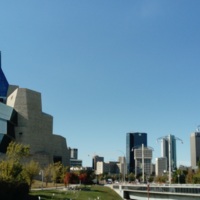
Canadian Museum for Human Rights
Situated in Winnipeg, at the heart of the Canadian Prairies, the Canadian Museum for Human Rights is the first museum in the world solely dedicated to the past, present and future of human rights. The museum aims to create inspiring interactive experiences for its visitors in order to equip them with the tools needed to make a difference in the lives of others. It is the first museum in nearly five decades to be built outside Canada's National Capital Region, with funding from the Canadian government, after being established by legislative amendments to the Museums Act in 2008. The museum's building was purpose-built, designed to reflect the themes of the museum in the external construction, with a Hall of Hope built in luminous alabaster and outside glass wings surrounding the building represent a dove as a symbol of peace.
The Canadian Museum for Human Rights has ten core galleries as well as two spaces for temporary or travelling exhibitions. All of the displays within the museum feature diverse aspects of human rights. These include: a discursive introductory display about what human rights are, a gallery that explores the perspectives of indigenous Canadian people, and an exhibition that focusses on the stories of Canadian individuals or groups that have had their own 'journeys' with human rights challenges. Another exhibition features an overview of Canada's legal stance on human rights. Other galleries explore human rights from a more global perspective, looking at the Holocaust, other instances of genocide around the world and 'Turning Points' that have marked key changes in international human rights policy. The later galleries on the visitor route explore human rights in the present and their potential in the future, challenging visitors to take action and inspire change. All of these galleries feature the use of digital interactives, film and audio presented from lots of different perspectives, often providing the visitor an opportunity to actively participate with the theme of the exhibition. Built without a collection, the museum has filled its galleries with objects on loan from organisations around the world, both in Canada and abroad. They also have objects donated to them from the people and groups the galleries represent. The museum also has a Tower of Hope that visitors can go up, with views over the city, and an indoor garden of reflection.
The Transatlantic Slave Trade is cited as the first instance of genocide in world history in the 'Breaking the Silence' gallery which explores the role of secrecy and denial in the persecution of genocide and what happened when people spoke out or offered resistance. The centre-piece of the gallery is an interactive table that shows instances of genocide, both through time and across the world, alongside related documents and images. The 'Canadian Journeys' gallery incorporates the narrative of enslaved Africans using the Underground Railroad to escape to freedom in Canada. There are also narratives of more contemporary forms of slavery and human trafficking. Narratives of enslavement have also featured in public programmes at the museum.
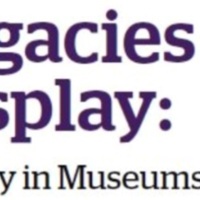
River Road African American Museum
The River Road African American Museum (RRAAM) was originally housed at Tezcuco Plantation, and opened in 1994. Due to a fire, it was relocated to its present site, a restored Caribbean-style cottage from the 1890s, in 2003. Before the museum opened, there was nowhere that charted the narrative of African American experience in the rural counties along the Mississippi. It developed its collections through donations; of buildings, objects, family documents, photographs, maps and pieces of art. The RRAAM opened with the aim of educating its visitors about the lives of Africans Americans who lived and worked on the sugar and rice plantations in the region. It has since been recognised as an international repository for African American culture in Louisiana. It hosts a varied public programme alongside its permanent displays, including touring exhibitions, concerts, lectures and school workshops.
The museum's website outlines its focus as 'more than just a slavery museum'; its key themes throughout the permanent exhibits are freedom, resilience and reconciliation. Five of the museum's displays focus on the contribution of African influence in key areas of Louisiana culture, including jazz, cuisine, medicine, art and inventions.
One key exhibit features a collection of slave inventories from local plantations- the museum lists the names of over 5,000 enslaved people. 'Free People of Colour' follows on from this as an exhibit which showcases the hundreds of people who obtained their freedom in Ascension. Outside, the RRAAM has built a 'Freedom Garden' which reveals the history of Louisiana's involvement in the Underground Railroad using a range of plants that would have been cultivated by the enslaved, both in Africa and on the plantations.
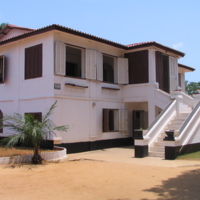
Le musée d'histoire de Ouidah
Le musée d'histoire de Ouidah (The Ouidah Museum of History) is located within the Old Portuguese Fort in Ouidah. The Fort was used to contain and transport enslaved Africans as part of the transatlantic slave trade, serving as the site for diplomatic presence of Portugal in the area. The fort became property of the Dahomean government in 1961, when it was restored and turned into a museum, opening in 1967. It is managed by the Department of Cultural Patrimony.
The museum's collections are grouped into six major exhibit themes: the Portuguese Fort (in which the museum resides), the Kingdom of Xwéda, the Kingdom of Dahomey, the Slave Trade, Vodun, and the cultural links between Benin and the New World. These collections are made up of artefacts, photographs and objects that have significant meaning to the history and culture of the museum's local area.
The history of slavery runs throughout the displays; from the Portuguese Fort display which discusses how enslaved Africans were kept there. The displays that explore the kingdoms of Xwéda and Dahomey use collections to emphasise the extent to which both of them were dependent on the trade in enslaved individuals with Europeans for riches and power. These include a range of archaeological finds, as well as engravings and drawings. The exhibition about the religious traditions of the area, in particular the development of Voodoo, reflects on the continued use of African religions by enslaved people in the Americas during the period of the transatlantic slave trade, using religious artefacts. A range of images and objects showcase the impact that people from Benin made on the cultures of New World societies, as well as the effects of mass repatriation to Benin after the decline of the slave trade.
The Slave Trade exhibits examine the system of transatlantic slavery from the sixteenth to the nineteenth century and how it impacted on the local area. The main focus is on the economic and social processes that the slave trade created in Benin, capture, enslavement and the Middle Passage. These themes are illustrated with a range of objects, artists' renditions and archival materials. Examples of objects on display include chains and yokes. Images are also used to give some information about the plantation system in the Americas and Caribbean.
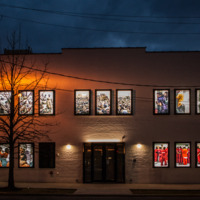
Legacy Museum
Open since April 2018, the Legacy Museum is built on the site of a former warehouse where enslaved Africans were imprisoned. The site is located between an historic slave market and the main river dock and train station where tens of thousands of enslaved people were transported through at the height of the domestic slave trade. Today it is a short walk from the National Memorial for Peace and Justice in the heart of downtown Montgomery, Alabama. The museum’s mission is to acknowledge and present the legacies of slavery, lynching, and racial segregation in the United States. The Legacy Museum is used to educate people about long-standing racial inequality in America and prompt them to search for truth and reconciliation with the aim of developing real solutions to contemporary problems. Its managing organisation, the Equal Justice Initiative, was founded in 1989 by Bryan Stevenson and was initially set up to help the poor, the incarcerated, and the condemned. In continuing this spirit of active community engagement, the museum also runs concerts and academic summits, and actively participates in human rights campaigning in Alabama.
The museum exhibition begins by showing replica constructions of slave pens, accompanied by unique audio and visual effects, attempting to allow visitors to empathise with an imprisoned slave waiting to be sold at the nearby auction block. There are also first-person accounts from enslaved people, portrayed on film by actors. Alongside these audio-visual experiences there are also more traditional exhibits that examine America’s history of racial injustice and its legacy, drawing connections across generations of Americans impacted by racial difference. These exhibits feature artefacts and archival materials. The museum also includes pieces of contemporary art, commissioned with creative partners to depict contemporary responses to the ongoing legacies of slavery and racial inequalities.
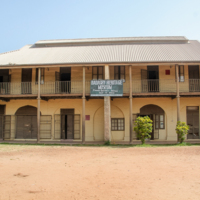
Badagry Heritage Museum
The Badagry Heritage Museum is housed in the former district officer’s office that was constructed in 1863. The museum attempts to highlight the injustice and horror of the transatlantic slave trade, whilst also exhibiting the rich histories and cultures of Africa. There is a specific focus on the heritage of pre and post-transatlantic slave trade in Badagry. The museum consists of eight galleries each dealing with particular themes relating to local heritage and the transatlantic slave trade. Guided tours are available. The museum is managed by the Nigerian Cultural Commission.Each of eight galleries are named after a part of the transatlantic slave trade. The first, the 'Introductory Gallery', focuses on the founding and early history of Badagry. The next five galleries all deal specifically with distinct phases of the slave trade, from capture, transportation, material culture, resistance, and industry. In these galleries are objects that illustrate the brutal nature of enslavement, including shackles and manacles, as well as replicas of slave ships. The seventh gallery examines the forced integration of the enslaved into the countries they were transported to, featuring videos of reconstructed slave auctions. Finally, the last gallery explores abolition movements and the persistence of slavery even after its legal end. The museum has attempted to incoporate the voices of local people within the displays, as well as depicting the significance they place on certain cultural and historical items within the museum. In addition to the historical collections, there are also some examples of contemporary art throughout, showing modern reflections on the systems of enslavement.
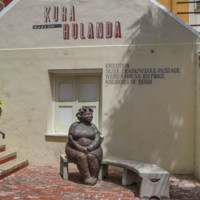
Kura Hulanda Museum
Situated on the grounds of a nineteenth-century merchant’s house and slave quarters, Kura Hulanda is an anthropological museum that focuses on the cultures of Curacao. Its displays examine a wide range of subjects from the origins of man, the African slave trade, and West African Empires, to Pre-Colombian gold, Mesopotamian relics and Antillean art. The museum is located in the central harbour of Willemstad, where Dutch merchants traded enslaved Africans and commercial goods. Kura Hulanda Museum demonstrates the influence that African and other diverse cultural heritages have had on Curaçaoan and Caribbean societies through time to the present day. It is managed by the Curaçao Tourist Board. The museum's exhibits trace Curaçaoans African roots and the legacy of the slave trade in the region with collections of art and artefacts from West Africa, illustrating the African influences on Caribbean culture. Displays chart African civilisations, the Middle Passage, life on the plantations, abolition and apprenticeship. There is a model of a slave ship, alongside examples of African bronze work, and instruments that showcase the brutal nature of enslavement. Other displays bring the narrative closer to the present day, examining the Civil Rights movement in the USA with panels relating to the Black Panthers, Martin Luther King and Malcolm X.
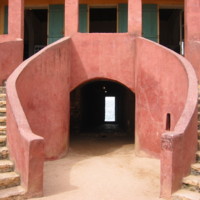
House of Slaves
The museum is located on Gorée Island, 3 km off the coast of Senegal. The structure was built in 1776 as a holding centre for Africans waiting to be exported across the Atlantic. It was converted into a museum and memorial in 1962. According to the original curator of the museum, Boubacar Joseph Ndiaye, the island played a pivotal role in the containment and transportation of slaves to America during the transatlantic slave trade. The aim of the museum and memorial is to help its visitors come to terms with the extent of the transatlantic slave trade and the effects of the trade on Africa and its people. It was designated a UNESCO world heritage site in 1978.
The content of the museum includes murals and artwork showcasing traditional African techniques, and depicting the process of enslavement. There is also a variety of objects such as chains, manacles, and cages which emphasise the brutal nature of slavery. The site itself is accessed via a ferry and the tourism industry of nearby Dakar is linked closely with the island. The key voices addressed within the museum are those of the enslaved; the museum brings visitors into close approximation with the living conditions faced by the enslaved during the transatlantic slave trade. One of the most poignant features is the 'Door of No Return' which is said to be the point where enslaved Africans were boarded onto ships ahead of the Atlantic voyage.